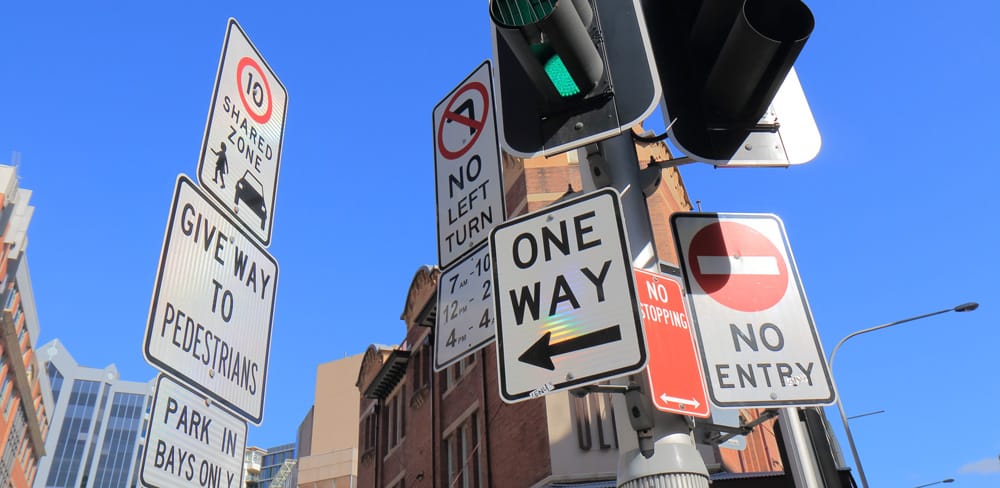Do you know your road rules?

It’s essential to know the Australian road rules before attempting to drive in NSW or Vic to avoid making simple mistakes. A driving theory test is the first step to getting a driver’s licence in both NSW and Vic, so let’s look at some of the basic road rules. It’s also necessary to understand the demerit points system and how it works. You will have to research this system as there are various ways to get these points, and they include fines and suspensions.
Which Side of The Road
Many visitors to Australia have trouble with understanding that we drive on the left-hand side of the road. An astounding two-thirds of the world uses the other side of the road, but we don’t judge. Although the change seems small, it impacts many different aspects of road use, like entering roundabouts and turning left or right.
Roundabout Basics
Before entering a roundabout, you’ll be confronted with one of two signs. The upside-down triangle tells you to yield to any traffic already in the roundabout, approaching from your right. A stop sign tells you that you must come to a complete stop before entering the roundabout, regardless of whether there is any traffic.
In a multi-lane roundabout, keep to the left lane if you intend to turn left and use the right or inner lane if you’re turning right. You can choose either track to continue straight out of the roundabout. Signal your intentions to other road users with the indicators.
Speed Limits
The maximum highway speed limit is 110 km/h in Victoria and NSW. You need to also adhere to other speed limits:
- 40 km/h in school zones,
- 50 km/h in a built-up area (sometimes 60 km/h),
- 100 km/h in rural areas.
In Victoria, authorities may fine you for exceeding the speed limit by as little as 2 km/h.
Emergency Vehicles
Any emergency vehicle displaying flashing lights has the right of way. You cannot move in front of emergency vehicles and have to move out of their way as soon as it’s safe to do so. The obligation overrides any other road rules, meaning that you can even move through red traffic lights to avoid impeding an emergency vehicle. However, it must be safe for you to do so. Although there are no special emergency services speed zones in Victoria or NSW, it makes sense to slow down when approaching emergency services vehicles.
Mobile Phones
Don’t use your mobile phone while driving. It’s illegal to use a mobile phone or any other devices while driving if you’re a P1, P2, or learner driver. Fully licenced drivers may make voice calls if the phone is secured in a holder and they don’t need to touch the phone in any way to use it.
Conclusion
While driving in Australia, you’ll be sharing the roads with heavy vehicles, horses, motorcycles and bicycles. Remember that a heavy vehicle has limited visibility and needs more space to stop, accelerate, or merge with traffic. Some areas have dedicated bicycle lanes, but cyclists have the same road rights and responsibilities as any other user. You need to give them space and watch out for them. Above all, show courtesy and respect to fellow road users and avoid taking unnecessary risks while driving.